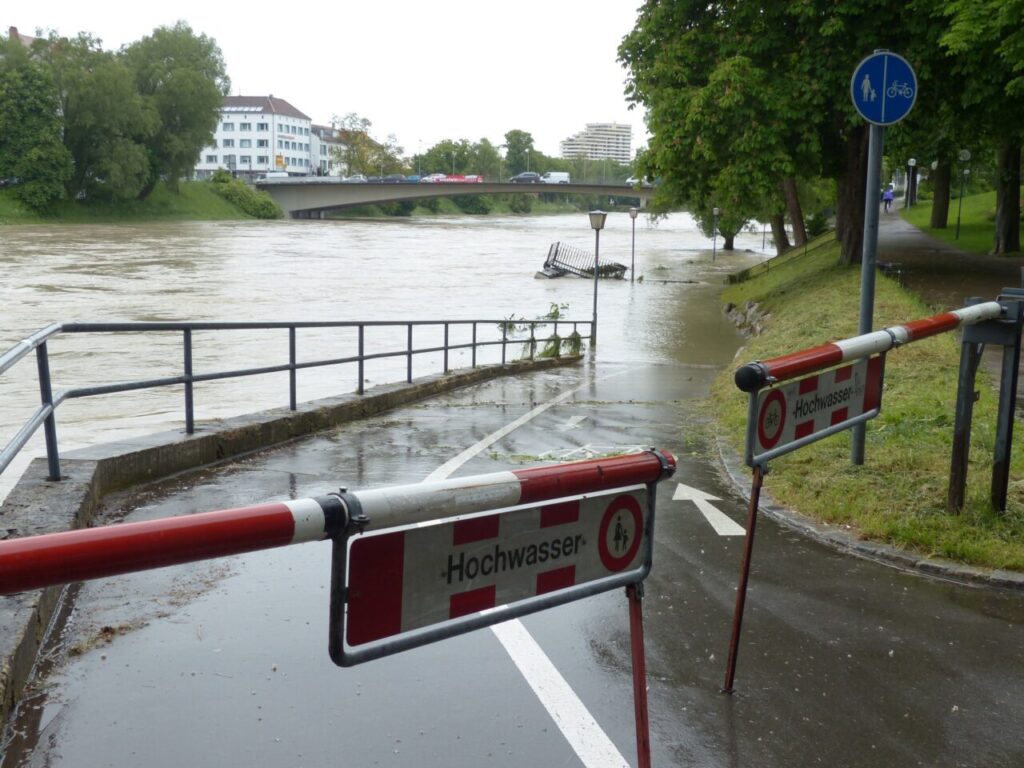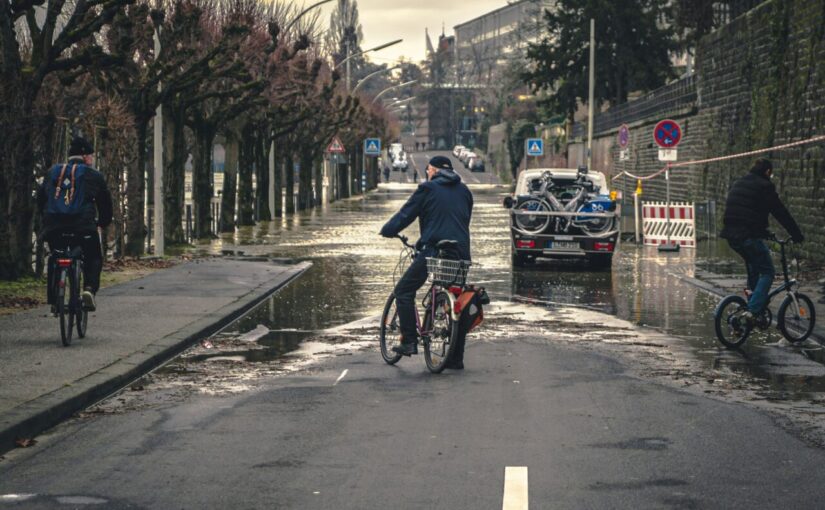This is part of a series on the economics of climate change and flooding by IGDC member Paul Hudson. Here he looks at some of the potential unintended consequences of insurance cover.
Living next to rivers provides humans with a great range of benefits from transportation access, supporting nature and agriculture, supplying drinking water, or just providing nice views and places to visit with friends and family. However, rivers also pose a threat when they inevitably (and increasingly!) flood.
Flooding is a globally significant natural hazard that can cause severe damage to infrastructure, buildings, and communities. For example, Munich Re (one of the world’s largest reinsurance companies,- a company that insures insurance companies) reports that in 2022 a single flood in Australia caused £5.4 ($6.6) billion worth of property damage, while across the whole year an additional £1.23 ($1.5) billion of property damage was also experienced. Munich Re reports that the flooding across Central Europe in 2021 was the costliest flood event so far experienced globally with an estimated loss of £44.2 ($54) billion. These impacts stand to get worse due to the combined effects of climate change and socio-economic development according to the latest IPCC reports.
The sheer magnitude of the threat posed by flooding means that it’s really important that we use more protection strategies and approaches than perhaps we have in the past. The IPCC reports that avenues such as insurance and property-level flood resilience measures (e.g., temporary flood barriers, using tiles instead of carpets, moving expensive items upstairs) can be cost-effective ways to limit negative flood impacts.
Insurance and property-level flood resilience measures have become key parts of many countries’ strategies for limiting flood impacts, through a process known as integrated flood risk management. Integrated flood risk management requires that everyone who is threatened by flooding plays an active role in limiting the potential damage that a flood can inflict. Integrated flood risk management promotes a greater sense of personal responsibility and protective behaviour by property-owners.
However, just because insurance and property-level flood resilience measures can help manage and endure flood impacts doesn’t mean that they will work together positively. There is a chance that there is a negative interaction between the two, which instead of helping to manage flood impacts actually makes them worse in the long run.
This negative interaction is known as “moral hazard”, if individuals feel protected by insurance coverage they may employ fewer property-level flood resilience measures. The logic being, why would you try and lower the impact when your insurance company will cover the repair and replacement costs! The consequence of this is that over time insurance becomes more and more expensive, and fewer and fewer people will be able to access the protective benefits of insurance coverage.
To see if the problem of moral hazard is present in disaster insurance markets, researchers from the University of York and Potsdam used one of the few longitudinal surveys of people threatened by flooding to explore how people’s purchase of flood insurance altered how many property-level flood resilience measures they employ over time.

Our longitudinal survey followed 227 people for 48 months following their experiences of the 2013 flood in eastern Germany. We look at how people’s choice to be insured or not alters the number of property-level flood resilience measures they have employed, how many they intend to employ in the future, and if they actually follow up on their intention to employ more measures!
Overall, we did not find indications for the presence of moral hazard in Germany, but a continuing positive association between insurance purchases and the employment of property-level flood resilience measures. People who purchased insurance tended to see a boost in the number of property-level flood resilience measures in the first year they purchased insurance and then a slightly slower growth in measures afterwards, and were more likely to actually follow up on their intentions to become better prepared.
We believe that this result happens because of the intrinsic characteristics of the people buying flood insurance in Germany. In Germany flood insurance coverage is voluntary, and as such those who want to protect themselves are more likely to purchase insurance coverage, and if they are proactively protecting themselves in one area they will be active in other areas of self-protection as well. This internal desire to be protected outweighs potential moral hazard influences on behaviour.
While this result is positive for flood management policy making overall, the relationship needs to be regularly assessed. The percentage of German households with insurance has grown very rapidly over the last 20 or so years, reaching a coverage level of about 40%. Therefore, it is possible that there will be a turning point in the relationship between insurance coverage and property-level flood resilience measures as more people buy insurance as a normative behaviour, but are unmotivated (or even less motivated due to ‘moral hazard’) to take additional actions such as resilience measures.
Read the full paper, Investigating moral hazard and property-level flood resilience measures through panel data from Germany by Paul Hudson and Lisa Berghäuser.
About the author

Paul Hudson is a Lecturer in Environmental Economics.
He is a generalist researcher in the fields of climate change adaptation, disaster risk management, and nature-based solutions for both, looking at the role of the individual in responding to the threats of climate change and disasters (flooding specially).
His current projects look into how we can build the business case for private sector investment in a range of nature-based solutions. Before joining the University of York, Paul completed his PhD research into the use of flood insurance at the Institute for Environmental Studies (IVM) at Vrije Universiteit Amsterdam, after which he spent four years at the University of Potsdam’s Institute for Environment and Geography’s natural hazard risk research group.

